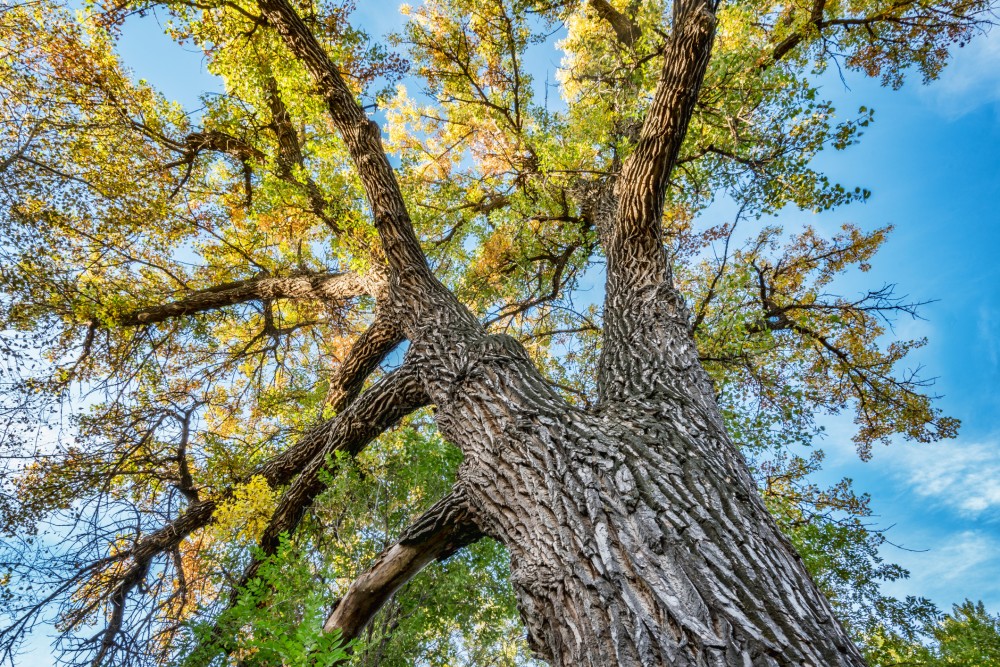Trees communicate with one another. I’m trying to listen.
My favorite is a 100-year-old male cottonwood. I call him Grandfather.

“Trees have long been trying to reach us,” says Richard Powers in his stunning novel The Overstory, winner of this year’s Pulitzer Prize for Fiction. The lives of his characters are intersected by trees, who come to them in dreams, accidents, near-death experiences, and ordinary encounters.
A Vietnam veteran’s life is saved as he parachutes into the limbs of a banyan tree in Cambodia, and he subsequently commits to a life of caring for trees. A college student has a mystical encounter that leads her to chain herself in front of a bulldozer that threatens old-growth Douglas firs. A brilliant forest biologist stirs controversy by insisting that trees are social creatures—sharing nutrients and information across vast underground fungal networks, signaling each other through airborne messages warning of insect attack or disease, showing “tree talk” to be a foundational process in forest ecosystems.
Each of the novel’s characters learns that “the most wondrous products of four billion years of life need help” right now. Not the trees, but us. We are the ones who have lost our sense of connection to everything else. “Trees used to talk to people all the time,” Powers writes. “Sane people used to hear them.”





